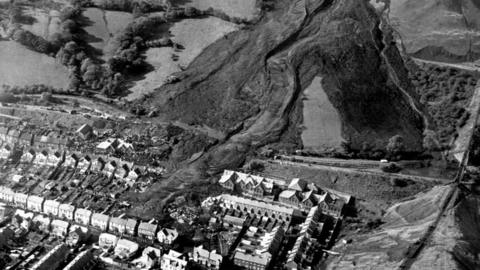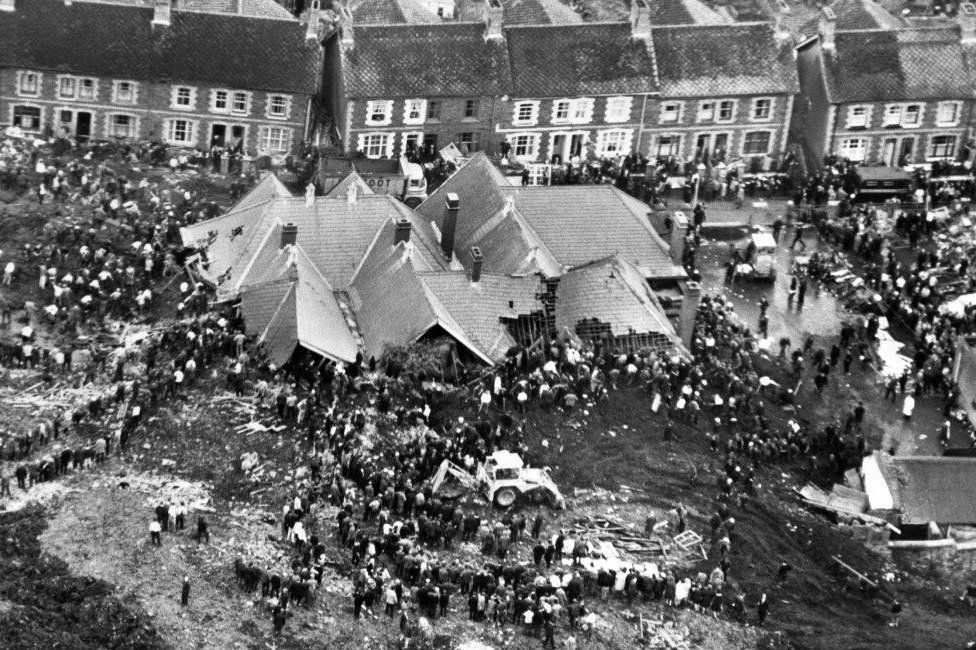The Aberfan Tragedy: A Village Buried, A Nation Changed
The name Aberfan is synonymous with one of the most heart-wrenching disasters in modern British history. On a seemingly ordinary autumn morning in 1966, a peaceful Welsh village was shattered by an unimaginable catastrophe. This isn't just a story of a mining accident; it's a profound narrative of loss, community resilience, and a tragedy that, in many ways, could have been prevented. Even decades later, the Aberfan disaster continues to haunt the community at its heart and serves as a stark reminder of the devastating consequences when warnings go unheeded.
The Fateful Morning: October 21, 1966
The date, October 21, 1966, is etched into the collective memory of Wales and beyond. It was a Friday, and in the small mining village of Aberfan, nestled near Merthyr Tydfil in South Wales, life was proceeding as usual. Young schoolchildren at Pantglas Junior School had just settled into their math lessons, their innocent minds focused on numbers and equations, unaware of the impending horror.
At precisely 9:13 AM, disaster swooped down. A colossal mass of coal waste, known as "Tip 7," located on a mountain slope above the village, began to move. This tip, created from spoil from the nearby Merthyr Vale Colliery, had grown to an enormous size, looming precariously over the homes and the school below.
Within moments, nearly 140,000 to 150,000 cubic yards (or tonnes) of black slurry cascaded down the hillside. This wasn't just a landslide of solid earth; heavy rainfall in the preceding days had turned the mining waste into a liquid, fast-moving torrent. It destroyed everything it touched, sweeping away houses and, most devastatingly, engulfing Pantglas Junior School and part of the adjacent secondary school.
A Village Shattered
The immediate aftermath was pure chaos and devastation. The black tide of coal waste buried the school and surrounding homes, trapping hundreds. The community, along with emergency services, rushed to the scene in a desperate attempt to rescue survivors. The view of the slope just three hours after the disaster was one of utter destruction, a stark testament to the force of the collapse.
The scale of the tragedy quickly became apparent. The 1966 Welsh mining tragedy claimed the lives of 144 people. The breakdown of the victims is particularly heartbreaking:
- 116 children: Most of the victims were children, predominantly those attending Pantglas Junior School.
- 28 adults: Teachers, staff, and residents from the houses swept away.
For those who survived, like a 20-year-old resident born and bred in Aberfan whose nine-year-old brother survived, the trauma of that day would never leave them. The image of a peaceful village being shattered by a coal waste tip collapsing, burying a school, remains one of the darkest chapters in British history.
The Anatomy of a Disaster: Why Aberfan Happened
The Aberfan disaster was not merely an act of nature; it was a man-made catastrophe waiting to happen. The coal tip itself was poorly positioned, built directly over a natural spring. This critical oversight, combined with heavy rainfall, created the perfect conditions for the tragedy.
A Preventable Tragedy
The true story of the Aberfan disaster reveals a tragic truth: it was a preventable event. Warnings about the instability of the tips had been raised by residents for years, but these concerns were largely ignored by the National Coal Board (NCB), which was responsible for the tips. The combination of the tip's location over a natural spring and the saturation from heavy rain turned the solid waste into a deadly slurry, leading to the catastrophic collapse.
There were even reports of precognitive experiences related to the Aberfan disaster, with individuals having visions or dreams of the impending tragedy. However, as unfortunate as it is, these glimpses into the future were never specific enough or communicated in a way that could have prevented the disaster. This highlights the painful reality that despite potential warnings, the necessary action was not taken.
Echoes of Grief: The Aftermath and Legacy
The immediate aftermath of Aberfan saw an outpouring of grief and support from across the world. The Aberfan Disaster Memorial Fund (ADMF) was established on the very day of the disaster, receiving nearly 88,000 contributions totaling £1.75 million. This demonstrated the immense sympathy and solidarity felt globally for the shattered community.
A Nation Mourns
The tragedy profoundly impacted not just the local community but the entire nation. Queen Elizabeth II, during her 70 years on the throne, witnessed countless tragedies, but the Aberfan disaster was one she never forgot. Her initial delay in visiting the site was a rare misstep, but her subsequent visits and deep connection with the community showed her profound empathy for the victims and their families. The disaster's enduring impact on the royal family is even featured heavily in the third season of Netflix’s “The Crown,” bringing the story to a new generation of viewers.
Remembering and Learning
The Aberfan community faced a lengthy and arduous fight to have the remaining coal tips removed from above their village. Despite resistance from the NCB and the government, largely on the grounds of cost, the residents persevered, eventually securing the removal of the dangerous waste. This struggle underscores the community's determination to ensure such a disaster could never happen again.
Today, the Aberfan disaster continues to haunt the community, serving as a permanent scar on the landscape and in the hearts of those who lived through it. Memorials stand as solemn reminders of the lives lost, particularly the 116 children. The story of what happened in the South Wales mining village of Aberfan is a devastating one, but it is also a testament to the resilience of the human spirit in the face of unimaginable sorrow.
A Story That Must Be Told
The Aberfan tragedy is more than just a historical event; it's a powerful lesson in industrial responsibility, community advocacy, and the enduring pain of loss. It highlights the critical importance of listening to local concerns, ensuring safety standards, and preventing human-made disasters. The story of Aberfan is one that must be continually told, not only to honor the 144 lives lost but also to ensure that the lessons learned from this preventable catastrophe are never forgotten.
In summary, the Aberfan tragedy on October 21, 1966, was a catastrophic collapse of a coal spoil tip, exacerbated by heavy rain and poor planning, which tragically buried a school and houses. It claimed the lives of 144 people, predominantly 116 children, leaving an indelible mark on the Welsh community and the nation. This preventable disaster led to significant public outcry, a royal response, and a long fight for justice and the removal of remaining tips, ensuring its place as a profound and somber chapter in British history that continues to resonate today.

Aberfan disaster: The Queen's regret after tragedy - BBC News

Aberfan disaster: 50th anniversary marked with silence - BBC News

Aberfan disaster: The Queen's regret after tragedy - BBC News